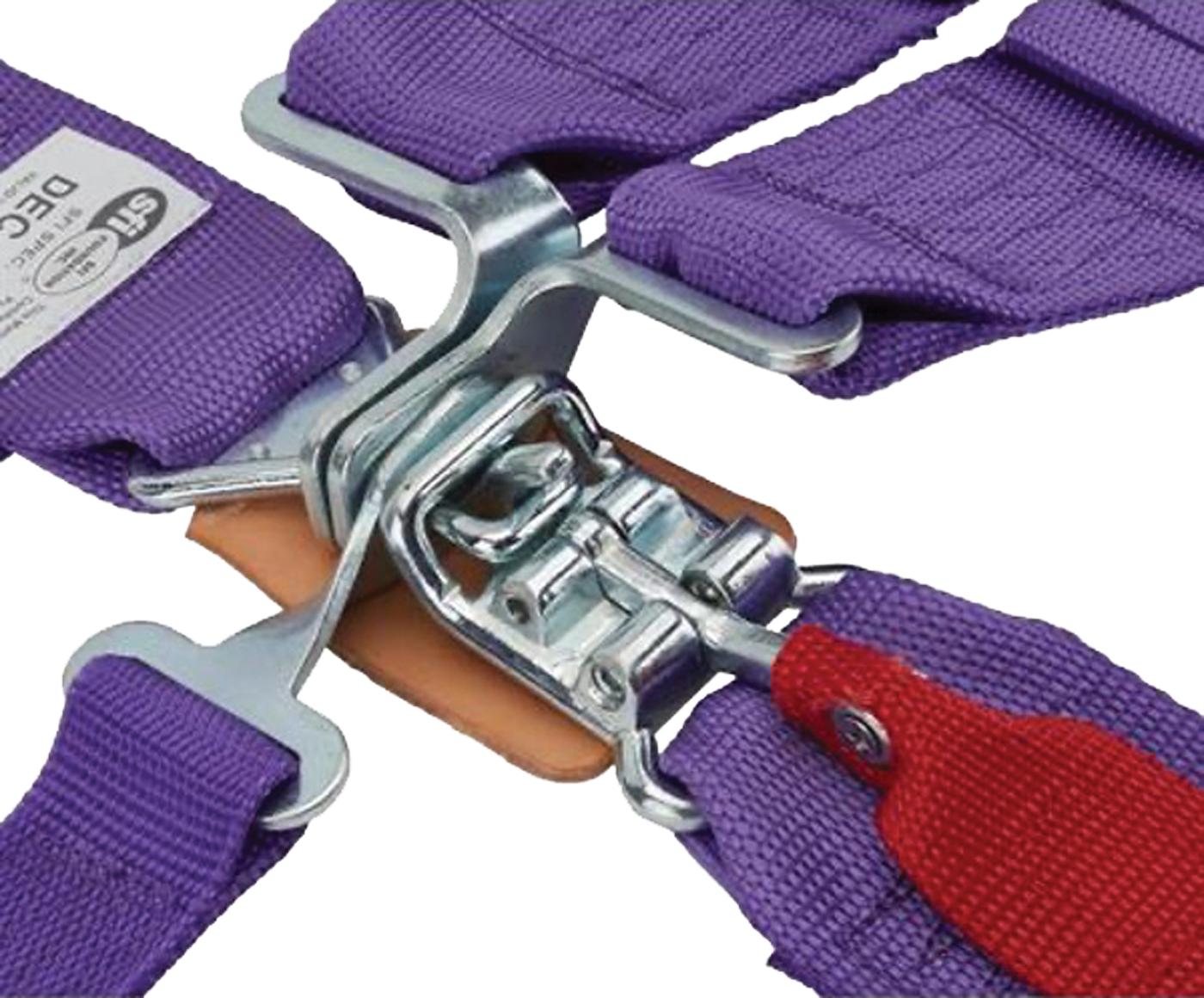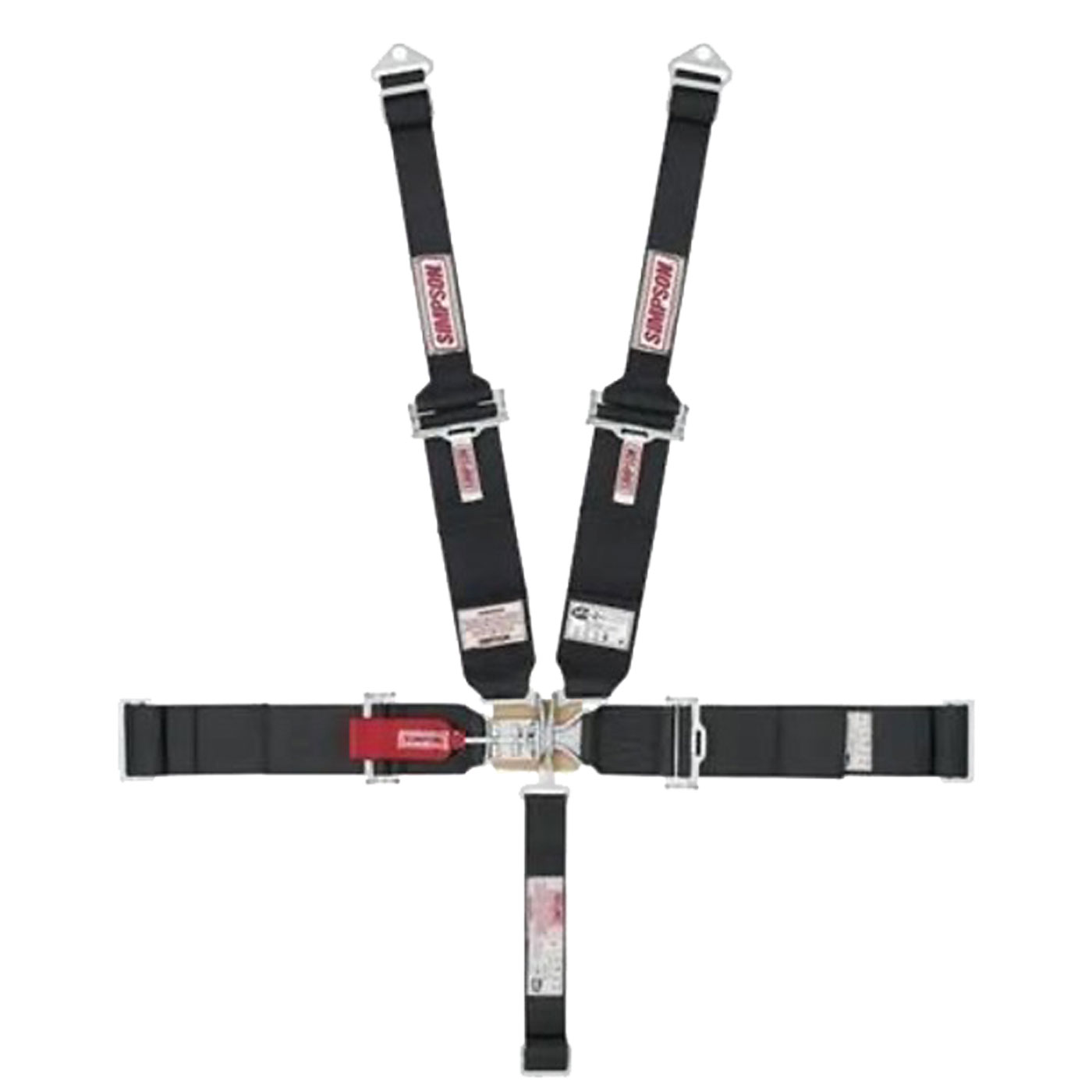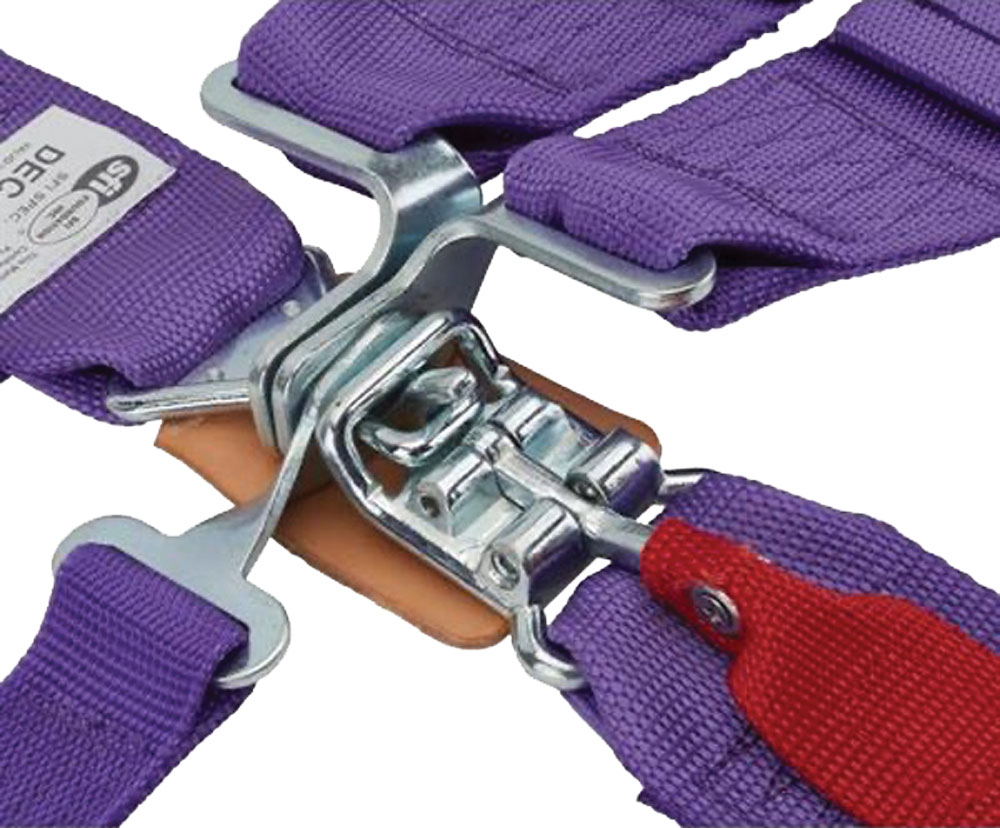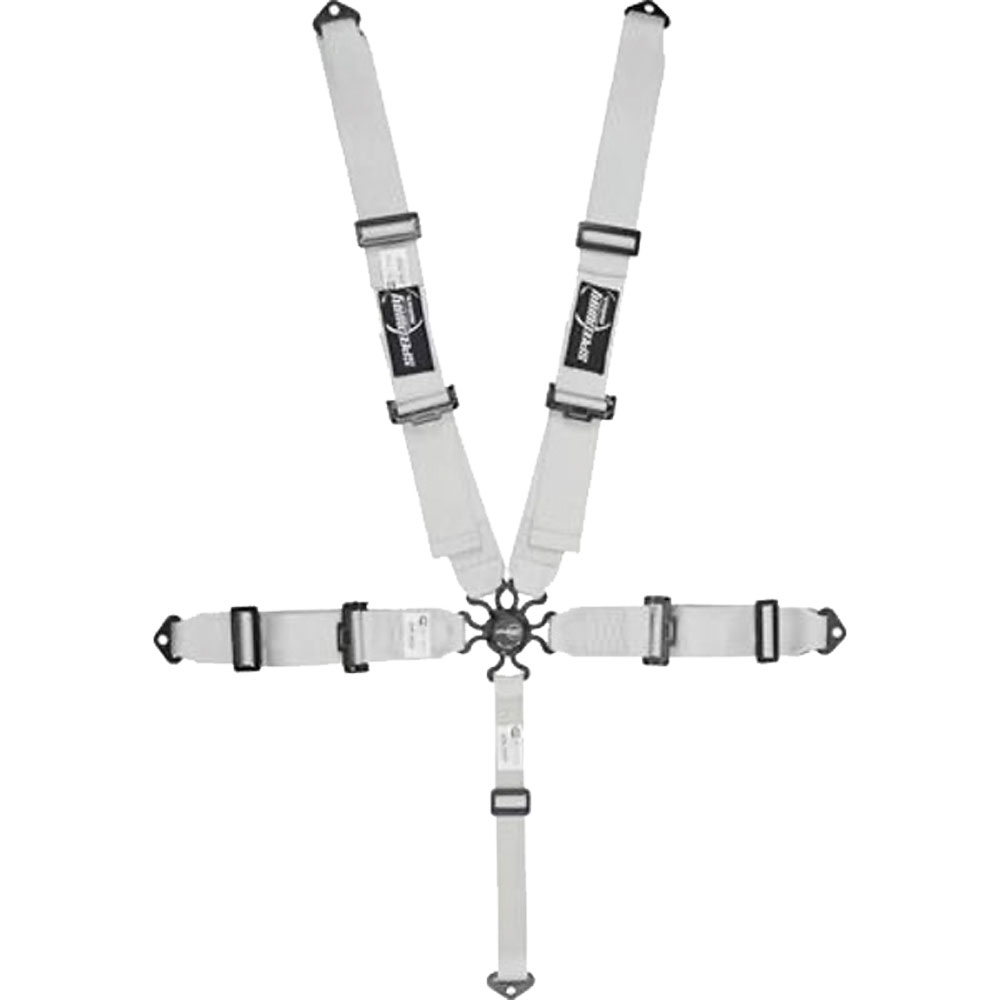PRI Tech: How to Choose a Racing Harness

Belt width, length, latch type, and mounting location are just some of the variables to consider when adding a safety harness to a race car.
Seat belts and racing harnesses are among the top-five most important safety items you can buy for your race car. With all the options that exist between size, length, closure type, and adjustability, it can be hard to decide on a specific set. This guide will give you helpful tips on what to look for in each belt and help to narrow down your choices for an informed decision.
Do I need a 3-inch or 2-inch belt?
First, let’s look at size. The majority of belts come in a 3-inch width. They are common in bigger classes of cars such as sport compacts, hobby stocks, modifieds, and sprint cars. There are also a few belts that are 2 inches wide. These are common for smaller cars such as cage karts, quarter midgets, and junior sprints. Verify with local tracks or series if they require a specific size.
From there, it comes down to what you race. The only exception to this is that some 3-inch harnesses have an option for 2-inch upper shoulder belts (above right). These are referred to as “HANS” type belts. When wearing a HANS device, these narrower belts fit the HANS shoulders better. With some belts you can upgrade the shoulder belt portions for HANS use versus buying all new belts.
What belt length is right for me?
Next, let’s discuss belt length and why you might need a longer belt. Some belts are made longer to facilitate attachment points that are not directly behind the seat. In some race cars, such as quarter midgets, the belts need to be longer to reach the bars where they attach. Harnesses can be bolt-in, wrap-around, or both.
Bolt-in harnesses have a triangular bracket at the end of the belt that bolts through a spud or tab welded onto the frame. Usually, these brackets are sewn in place and are not removable. Wrap-around harnesses are just that: The belt wraps around a frame gusset and passes through a buckle multiple times to hold itself in place. A good option for this type of harness is Speedway Motors’ Racing Harness/Shoulder Pad/Sternum Protector Kit. Some belts offer a combination, which has a wrap-around end but include a bolt-in triangular bracket that the belt can be threaded through and secured into the harness using the wrap-around buckle. With the bracket, you basically turn the wrap-around belt into a bolt-in. See “How do I mount my safety harness?” section below for more details on proper mounting configurations and belt angles.



Four-point vs. Five-point Harness
A four-point harness consists of two shoulder belts and two lap belts connecting at the center of the lap belts. It is commonly used in recreational off-roading, track days with street vehicles, and non-extreme racing events, offering better restraint than the traditional three-point harness (seat belts) used in passenger vehicles. The SFI five-point harness consists of two shoulder belts, two lap belts, and an anti-sub (AKA anti-submarine or sub-strap) belt that goes between the legs to a mounting point under the seat line. The anti-sub strap on a five-point harness prevents the driver from sliding forward in a crash. Each belt in a five-point harness assembly is a distinct belt, and all the belts are connected together at a common point via a latch or cam lock, which is covered in the next section. Nearly all competitive racing bodies (IMCA, NASCAR, NHRA, World of Outlaws, USAC, F1, IndyCar, etc.) require at least five-point harness seat belts, and it’s the minimum recommendation for high-speed environments.
What is the difference between latch-and-link and cam lock belts?
The next option on harnesses is the latch type, such as the 5-point racing harness cam lock (bottom left photo). There are basically two different kinds of latches: latch-and-link and cam lock. The latch-and-link belts are the most popular and most common. They basically operate as a hook and loop. The shoulder belts and sub belt slide onto the loop, and the hook latches onto the loop, holding it all together. The cam lock latch operates as a hub. The shoulder belts, sub belt, and other lap belt push into the cam latch, clicking into place like a street car
seat belt.
To release, you simply pull or rotate a lever or knob, which activates a cam-release inside the latch, releasing all the belts simultaneously. Generally, the cam lock belts are easy to operate, allowing the belts to be locked in/secured one at a time, but are more expensive. Whereas, the latch-and-link belts are nearly infallible, but take a little effort to get used to and don’t release quite as easily.
The latch-and-link style belt latch (photo on middle left) helps provide some clarity to the design. The right lap belt has the link loop end sewn into it and the sub strap end buckle, along with both shoulder strap end buckles, slip over the link loop portion. Finally, the left lap belt’s end buckle is slipped over the end of the link loop and the left belt’s latch lever is pushed toward the belt webbing to engage the latch into the right lap belt’s link loop, retaining all five belt segments.
Similar to the latch-and-link, the cam-lock style belt starts with the main latch assembly as part of the right lap belt. However, that is pretty much where any similarity ends. The remaining belts, which include left and right shoulder, sub strap, and left lap belt, all have a latch “tongue” like a production car seatbelt that can be inserted into the cam lock latch individually. This makes belting in yourself a little easier. Then, instead of lifting the latch-and-link lever, you either twist or pull the cam lock lever to release all the belts at once.
To see the difference between latch-and-link and cam locking systems in action, we have a helpful short video at youtube.com/shorts/YKRbfvh2Q-M.
What type of belt adjustment is best?
The type of adjustability each belt has is another consideration. The basic types are pull-up, pull-down, and ratcheting. When a belt is a pull-up design, it means that the lap belts tighten by pulling the belt’s “tail” upward toward the latch. These belts are easier for the driver to tighten. In comparison, a pull-down design means the belt tightens by pulling the belt’s “tail” downward away from the latch. These are easier to have someone outside the vehicle tighten for the driver. Lastly, ratcheting seat belts have a mechanism on the left side lap belt that, once latched together, the ratchet can be tightened a lot tighter than simply pulling on the “tail.”
They use a standard 1/4-inch ratchet and still utilize the standard latch-and-link style latch. Ratcheting belts, such as a 2-inch racing harness, are most common in sprint cars and other race cars with enough clearance around the left side of the seat to mount and access the ratcheting mechanism. These require a bolt-in spud or extra frame bracket.
What is the benefit of a six-point restraint?
The one last thing to consider in your safety belt plans is whether you want to use a more traditional five-point belt or the newer six-point belt. Initially, the thought goes to driver comfort, as the six-point’s additional sub strap means the two sub straps are positioned against the inner thighs versus the single sub strap of the five-point harness, which is routed straight down the middle of the groin area. However, consider the racing seat and belt mounting locations before you decide. An improperly installed six-point belt is not better than a properly installed five-point belt. Furthermore, check with your sanctioning body and/or track rules, as some mandate the six-point belt setup. Whichever system you choose, ensure it is properly installed for it to be the most effective.
How do I mount my safety harness?
The proper way to mount a harness depends on the cage design, racing seat, and harness. Generally, avoid mounting to any area not specifically designed to hold the end of the harness (be it a bolt-in or wrap-around). It is preferred to mount the belts in double shear with a bolt-in tab on the end of the belt. This allows the belt/harness to pivot and align with the force applied in a crash. Avoid mounting a bolt-in tab where any load applied to it would bend the tab or bolt. The shoulder belts should attach to a cage crossbar roughly 10 degrees below the horizontal plane of the driver’s shoulder, while the lap belts should sit across the pelvis (the strongest bone in your body!) with the buckle about 2 inches below the driver’s navel. Lastly, the sub strap should be anchored just behind your chest plane. The belts should not rub against the seat openings or any sharp interior panels, and the belts should be configured in the shortest length possible.
What is an SFI Rating?
SFI is a non-profit certification and testing organization for the motorsports industry. The certification shows a product has been tested to meet or exceed a set of data points to ensure the user’s safety. Items like racing suits, helmets, and safety belts come in various SFI ratings (particularly racing suits). For safety belts the SFI rating is 16.1, and they are certified for two years. Why only two years? Many variables, such as sun fade that deteriorates the webbing material, dirt and water, etc., all contribute to loss of belt strength. Harnesses can lose between 50% and 75% of their strength over this two-year period, thus the replacement mandate. Furthermore, if the belts have been through an accident, they should be replaced immediately due to the stretching forces exerted on them in the crash.
There exists a multitude of options for harnesses. Check your rulebook, look at the racing you will be doing, and consider what neck restraint you will be using. Measure for belt length, if they don’t attach right behind the seat, and think about your needs when it comes to the latch and adjustability. Remember, safety components are the most important thing in your race car, besides you. Check out the racing harnesses from Speedway Motors. Your safety comes first!
Mark Houlahan joined Speedway Motors in 2020. Houlahan has always enjoyed telling a story with words on paper (and now a screen) through numerous automotive magazines and a book on Fox body Mustangs. In 2023, Houlahan was inducted into the Mustang Owner’s Hall of Fame. Column courtesy of Speedway Motors; SpeedwayMotors.com/The-Toolbox.
 MEMBERSHIP LOGIN
MEMBERSHIP LOGIN JOIN PRI
JOIN PRI


